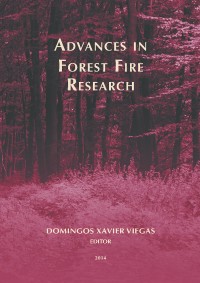Please use this identifier to cite or link to this item:
https://hdl.handle.net/10316.2/34350| Title: | Predicting wildfire ignitions, escapes, and large fire activity using Predictive Service’s 7-Day Fire Potential Outlook in the western USA | Authors: | Riley, Karin L. Stonesifer, Crystal Preisler, Preisler Calkin, Dave |
Keywords: | Forecasting;Fire danger;Ignitions;Escaped fires;Large fire activity | Issue Date: | 2014 | Publisher: | Imprensa da Universidade de Coimbra | Journal: | http://hdl.handle.net/10316.2/34013 | Abstract: | Can fire potential forecasts assist with pre-positioning of fire suppression resources, which could result in a cost savings to the United States government? Here, we present a preliminary assessment of the 7-Day Fire Potential Outlook forecasts made by the Predictive Services program. We utilized historical fire occurrence data and archived forecasts to assess how well the 7-Day Outlook predicts wildfire ignitions and escaped fires, ultimately to help characterize the effectiveness of this tool for prepositioning national firefighting resources. The historical fire occurrence data track ignitions on all land ownerships; from this dataset, we established number and location of ignitions and final fire size for the years 2009-2011 for Predictive Service Areas (PSAs) within the Northwest and Southwest Geographic Areas. These data were then matched to the corresponding PSA and appropriate forecast for each of the seven days prior to the ignition date. Final fire size was used as a metric to establish whether an ignition escaped initial attack, with fires greater than 121.4 hectares (300 acres) considered escaped. Our results show that 7-Day Outlook values yield better-than-random prediction of large fire activity, although there is wide variation in this relationship among individual PSAs. In addition, the number of escaped fires increased with the number of ignitions, with this relationship showing a distinct regional pattern. Fires were more likely to escape during certain times of the year, with this season being earlier in the Southwest than in the Northwest. Significantly higher numbers of escaped fires per ignition occurred during days considered to be high risk by the meteorologist than on lower-risk days. | URI: | https://hdl.handle.net/10316.2/34350 | ISBN: | 978-989-26-0884-6 (PDF) | DOI: | 10.14195/978-989-26-0884-6_135 | Rights: | open access |
| Appears in Collections: | Advances in forest fire research |
Files in This Item:
| File | Description | Size | Format | |
|---|---|---|---|---|
| 978-989-26-0884-6_135.pdf | 1.75 MB | Adobe PDF |  |
Items in DSpace are protected by copyright, with all rights reserved, unless otherwise indicated.
